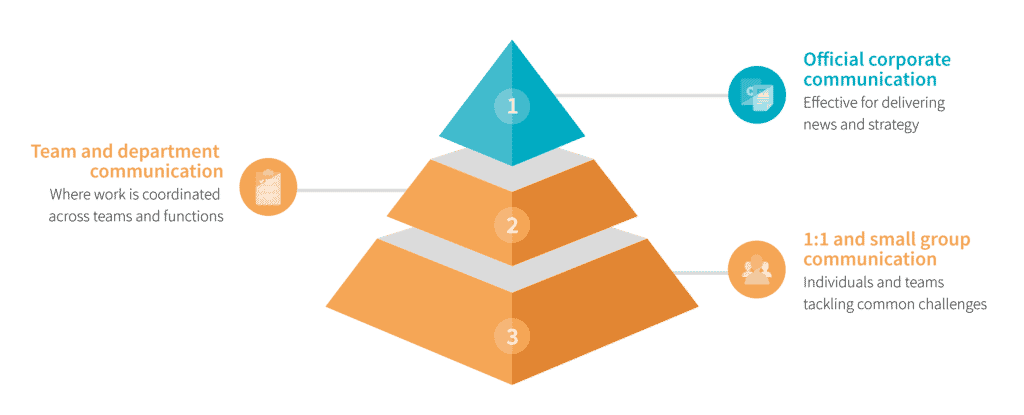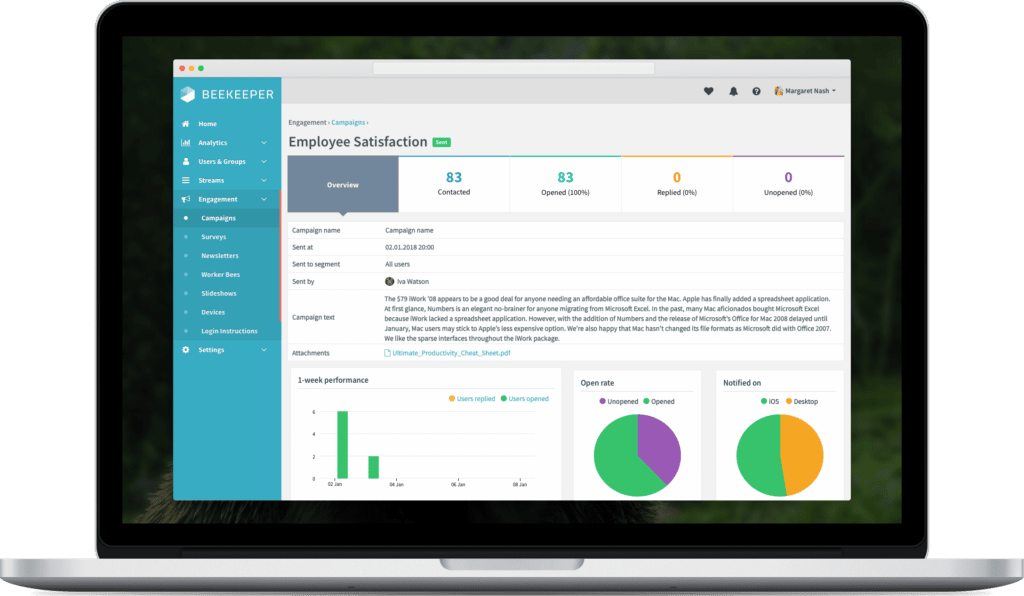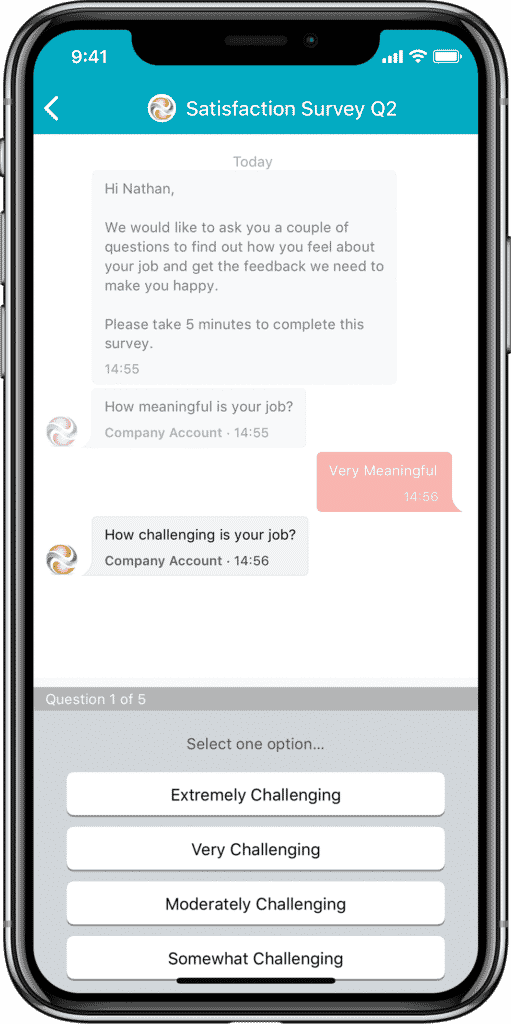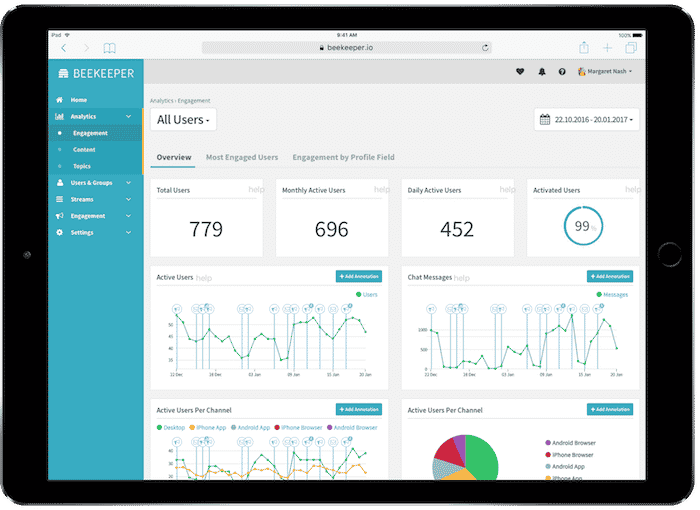Measuring employee engagement and internal communication within your organization is often overlooked. Yet, it’s crucial for creating smooth operations and optimizing your business performance.
Improved employee engagement results in:
- Higher productivity, better service, and greater worker loyalty
- More lucrative and rewarding business structure
- Profitable business results due to a satisfied workforce
An effective way of measuring employee engagement is through tracking internal communications using an employee collaboration tool. Knowing how often employees connect, communicate, and collaborate using your platform helps define your company’s employee engagement success.
Beekeeper is the frontline mobile collaboration platform that provides employee engagement analytics for your admin users in a powerful dashboard.
The tool allows you to:
- Analyze rich data and metrics
- Better understand how employees are actively using the platform
- Make continuous improvements to increase employee engagement and improve unified communications
Here’s a guide to using analytics for establishing, defining, and measuring employee engagement to achieve better business results and build a more cohesive workplace.
Internal Communication

Internal communication involves everything from phone conversations between two co-workers to emails sent to the whole company. However, today’s technology allows companies to tailor internal communication strategies to best fit the needs of their employees.
For example, a mobile collaboration app for non-desk industries like hospitality, retail, and manufacturing allows frontline employees to engage with company communications no matter where they are.
Direct messages, group chats, and custom campaigns allow employees to connect in new and efficient ways. And, by leveraging a digital workplace, businesses can better trace employee engagement than static forms of communication like emails, phone calls, and text messages.
Here’s what analyzing a campaign with Beekeeper looks like.

Employee Engagement
According to SHRM:
“Employee engagement relates to the level of an employee’s commitment and connection to an organization. Employee engagement has emerged as a critical driver of business success in today’s competitive marketplace.”
Today, an essential drive of employee engagement is proper communication. With only 31% of employees engaged, it’s more important than ever to communicate and connect with employees through channels that are best for them. In fact, statistics show that disengaged employees cost companies millions of dollars per year.
When you send a message to an entire department or even the whole company, what are the odds someone will miss the notification? It’s hard to know for sure who’s out there reading your messages without a tool for measuring employee engagement.
However, an analytics dashboard on your employee collaboration app will tell you:
- Who has read your communications
- When they read them
- How many users are active on the platform
- What type of content gets the most interaction
Functions like automated reminders and confirmation campaigns keep everyone connected. This means it’s more likely that every employee will read your message – and take the desired action.
Customized campaigns also help personalize each employee’s experience. For example, each role within a company dictates the user’s communications. So, while they will receive all enterprise-wide communications, they will also receive customized messages directly related to their department, location, or role.
There is also a social aspect where employees can create posts that colleagues can like and comment on. This facilitates a culture of connectedness and transparency, which further engages employees.
Satisfaction Surveys

Employee surveys are essential tools that help businesses measure employee:
- Satisfaction
- Loyalty
- Engagement
- Collaboration
- Communication
However, surveys should be planned in detail before being distributed to employees.
For example, it’s essential to outline:
- The goals you’d like the survey to achieve
- The timing of the survey – such as annual or random distribution
- The questions that will appear in the survey
- The data and analytics your platform can capture
The answers to your survey questions will help you glean direct insight into the employee experience at your organization. And so will the overall participation rate.
Why Is Measuring Employee Engagement Important?
Measuring employee engagement with peers and teams gives a broader picture of an employee’s depth within the company. People who tend to ignore communications or read them immediately but choose not to respond generally aren’t fully engaged with their work.
Finding out who is engaging in communications through their mobile collaboration platform is just as important as knowing how they’re engaging. Sending out employee surveys or requiring confirmation receipts helps discern connectivity within teams and highlights improvement areas.
Honing in on employees’ engagement can tell employers whether their methods of creating a positive workspace are successful. For example, Google has reached an employee participation rate of 85%. This is due to a combination of employee feedback and constant adjustments to ensure optimal employee engagement.
While Google’s massive success is happening on a larger scale, even small businesses can benefit from:
- Assessing their employees’ participation
- Surveying employees directly
- Making changes to company culture and processes
For example, polling employees on what they feel makes a competent manager can identify desired traits for leadership positions going forward.
The Value of an Analytics Dashboard

An analytics dashboard provides crucial data on employee engagement. Features like real-time statistics, internal communication updates, and survey data analysis give you tools to decipher your employees’ behavior and engagement.
Seeing these results gives employers the insight they need to determine whether to:
- Increase staffing
- Change processes and procedures
- Make upgrades to facilities or software
- Provide training and development
- Make cultural adjustments
By learning who is reading what and when companies can decipher optimal timing for messages and meetings. Then, leveraging employee surveys can help a company keep up with employee preferences over time.
How to Measure Employee Engagement
Employees use team collaboration tools daily, but what’s the best way to measure what they’re doing with those tools? Here are a few best practices for measuring employee engagement:
- Create surveys to generate data on employee experiences, opinions, and general satisfaction
- Track when people open messages and when they respond
- Send campaigns with confirmation features built-in, so you are notified when someone opens your content
- Create messages and track responses to determine what type of content receives the most feedback
Ultimately, HR analytics make up a huge part of the overall state of your business and its employee participation. Use these to your advantage, and you will succeed in improving your employees’ productivity, satisfaction, and loyalty.







